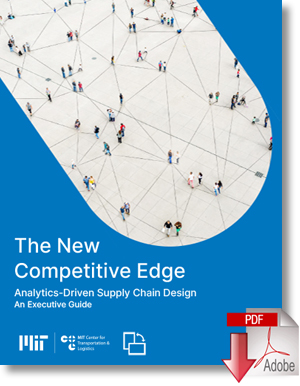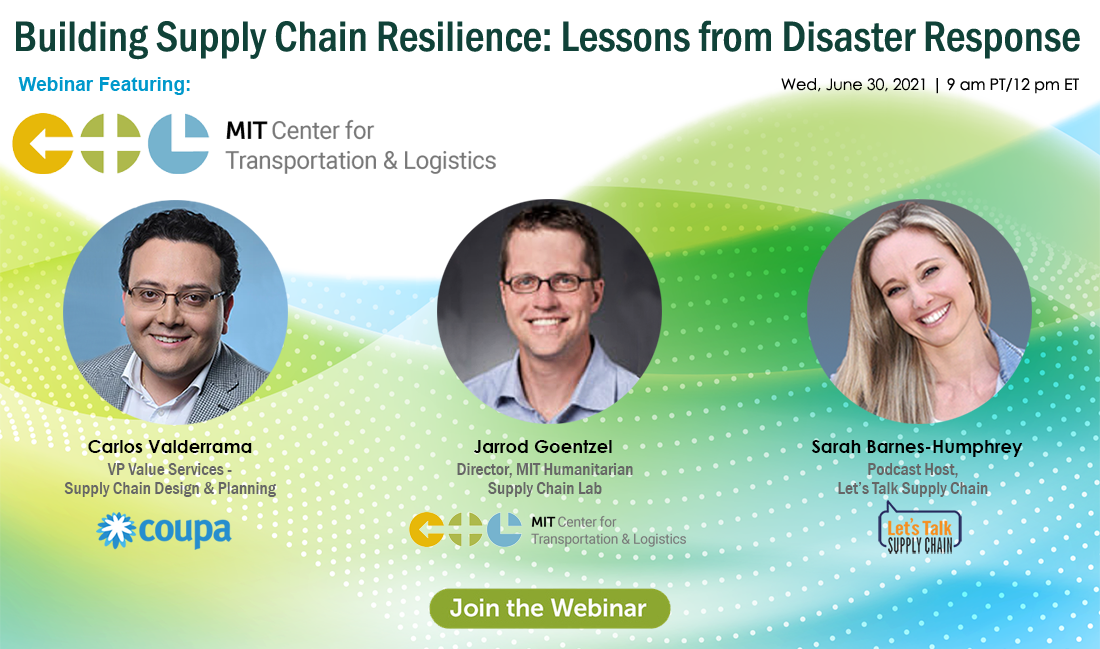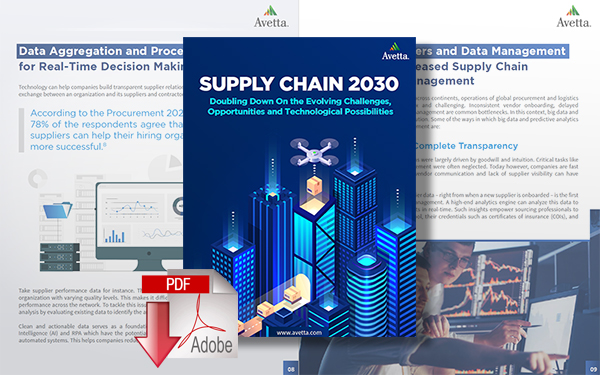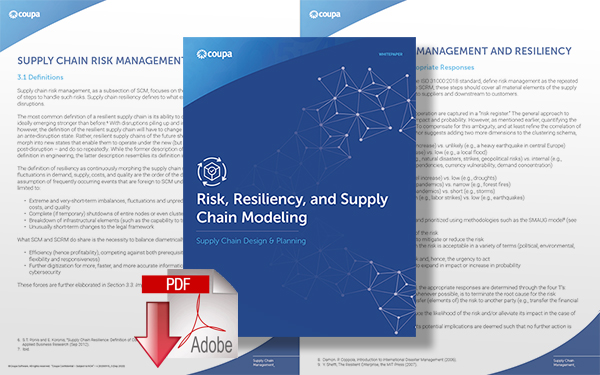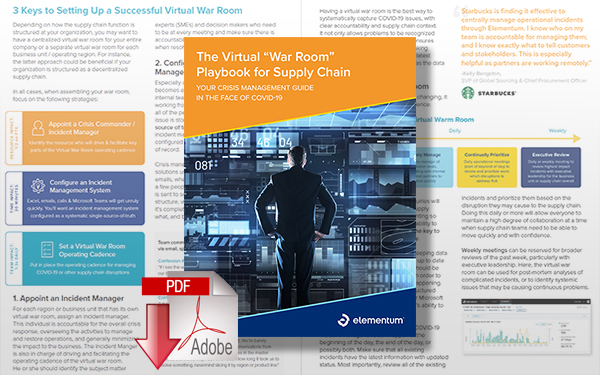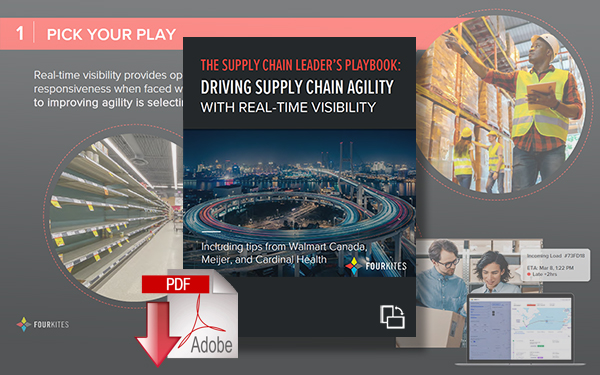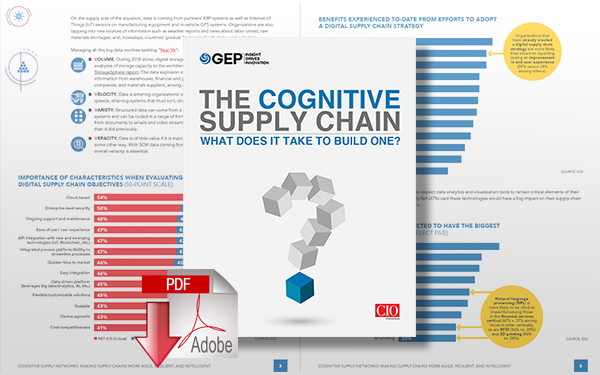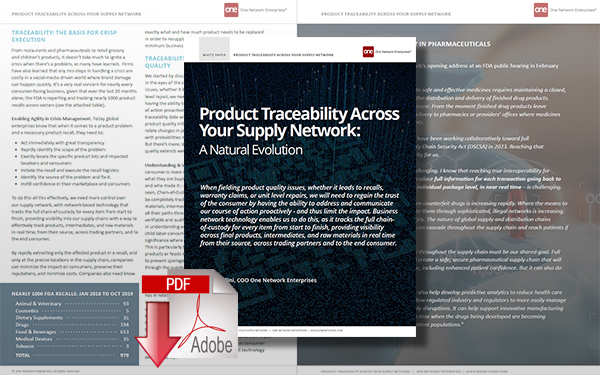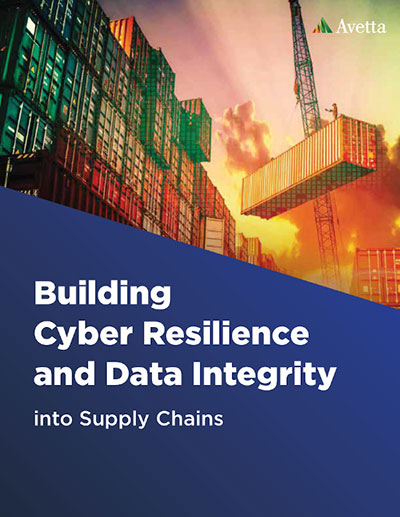Companies Need to Develop New Innovative Approaches to Supply Chain Design

Today’s supply chain design processes must capture both structural and organizational complexities that have emerged over the past two decades, with a focus on emphasizing value creation based on the ability to serve customers speedily and flexibly.
Time to Modernize Supply Chain Design
In light of the dramatic changes that supply chains have undergone over the last 20 years, companies need new, innovative approaches to supply chain design that shifts the focus from cost-minimization toward value creation.
And the design process must mature to capture the complexity, volatility, and uncertainty of the competitive environment in which modern supply chains operate.
These challenges can be met with the support of advanced methods that combine the power of analytical models with the implicit knowledge of expert human decision makers.
The new approach improves decision-making transparency, enriches design solutions, and reflects the real-life challenges that companies now face.
A New Supply Chain Environment
The field of supply chain design is rooted in conventions developed through studies carried out in the 1990s. These studies primarily focused on the physical configuration of supply chains, such as facility location and customer allocation decisions. Supply chains were designed to minimize costs such as those associated with facilities, warehousing, and transportation.
Also, in the conventional approach, the design of a supply chain is typically reviewed once every few years; these exercises are rarely linked with tactical planning decisions.
Such conventions are no longer adequate. The competitive environment in which firms operate has changed over the last two decades. During this time, the acronym VUCA has been employed to describe the increasing volatility, uncertainty, complexity, and ambiguity of business conditions.
Today, operating in a VUCA environment is no longer the exception but the reality to which companies must adapt daily. Globalization, multi-outsourcing, and the proliferation of brands are driving the structural and organizational complexity of contemporary supply chains. Increasing economic and political volatility creates uncertainties on the demand and supply side of global operations.
Furthermore, new models such as omnichannel retailing and shifting customer expectations in terms of service responsiveness and flexibility are radically changing the way we think about supply chain design. As supply chains have become a major competitive differentiator, design has moved center stage in the development of corporate strategy.
Traditional supply chain design approaches fail to capture these realities in several ways.
First, conventional methods fail to capture the complexity of contemporary supply chains. The decisions that underpin these designs were historically constrained by limits on computational power and data availability. Also, traditional design processes rarely incorporate factors such as demand uncertainty, supply chain disruptions, and multi-channel distribution.
Second, the focus on cost minimization is outdated. Traditional approaches mainly focus on decreasing the logistics costs under a given demand, which often results in the use of centralized facilities in areas with low real estate costs. Today, proximity to the end customer and delivery speed are major drivers of competitive advantage.
Consequently, when deciding on the deployment of logistics assets, companies must consider aspects of revenue management. Design approaches need to implicitly consider trade-offs between the ability to capture additional revenue by meeting customers’ increasing delivery expectations and the need to keep fulfillment costs under control.
Third, given the highly volatile and uncertain conditions that now prevail, success in contemporary markets requires decision-making agility and speed. As a result, supply chain design must be evaluated much more frequently than before. Thus, supply chain design must become an ongoing process that involves continuous updates of the variables and methods used, rather than one-shot exercises carried out every few years.
And fourth, in addition to these changes, in recent years there have been significant advances in data science and a massive increase in the amount of data available to supply chain professionals. Data analytics and machine learning tools make the structure and performance of complex supply chains more visible
Furthermore, advanced network science methods enable companies to characterize the complexity of relationships between multiple suppliers, manufacturers, distributors, and retailers.
A Supply Chain Fresh Approach
With the benefit of these developments, traditional optimization and simulation models can be extended to include more information and complexity. Consider, for example, a network design study carried out recently by the MIT Center for Transportation & Logistics (MIT CTL) for a major e-tailer that looked at multiple sales channels. The study explored the integration of direct sales and third-party flows as well as multiple distribution channels with deliveries to customers or traditional stores. Additionally, multiple delivery services, including same-day and instant delivery and customer and transport infrastructure information at the level of each neighborhood, were part of the study.
The shift toward value creation also extends supply chain, and design models. In addition to traditional decisions such as the number, location, and size of facilities, models can now incorporate go-to-market decisions including distribution channels, tactical asset deployment, and operation governance rules.
Importantly, studies no longer need to be confined to decision-makers within logistics and the supply chain function; executives from strategy, finance, sales, and marketing can now participate in design projects, bringing a level of cross-functional collaboration that is rare in traditional modeling exercises.
The ability to include other disciplines in the design process is a hugely significant development that will enrich supply chain designs and make companies more responsive to an ever-changing competitive environment.
For example, in a project carried out recently in MIT CTL’s CAVE Lab, a team of executives from a leading manufacturer modeled iterations of a supply chain design. Participants from various disciplines, including logistics, finance, sales, and marketing, worked jointly on defining key features of the design.
The exercise revealed that increasing the density of warehouse and asset deployment throughout the United States enabled the company to increase its market share significantly. This increased revenue more than compensated for the additional logistics costs incurred. Direct engagement of sales and marketing executives in the design process injected critical knowledge of market conditions. The co-design event was essentially a sales and operations planning exercise at a strategic level, quickly aligning intuition and accelerating the market response.
Given the central role that supply chain design now plays in corporate strategy, the modeling process must reflect the corporate goals of each company and the decisions needed to implement design changes. This level of specificity requires a shift from generic supply chain design solutions to a highly customized approach. Rapid prototyping and software development enables companies to implement tailor-made design solutions at a lower cost and update them more frequently.
Supply Chain Visualization Adds Value
These analytical advances are a promising avenue for capturing the structural and organizational complexity of contemporary supply chains - but are not sufficient. The sheer amount of data now available can lead to information overload and decision-making paralysis. Furthermore, “black box” model solutions can cause a lack of engagement, especially in the context of decision-making in cross-functional teams.
To address these challenges, it is necessary to provide intuitive interfaces with analytical models as well as the underlying data. Here, interactive visualization enables human decision-makers to grasp all of the information contained in large datasets, identify trends and patterns and build data narratives to support decision-making and engagement.
Also, decision-makers often have knowledge about implicit constraints or objectives that are not comprehensively captured by the analytical tools. Interactive visualization was essential in capturing local salesforce expertise in the previously mentioned case. Decision support systems utilizing mixed-initiative approaches - which combine the inputs of expert users and the analytical power of the machines - allow design teams to arrive more quickly at solutions that address more realistic challenges.
For example, a company was investigating better network configurations for its global distribution network that comprised hundreds of facilities and tens of thousands of customers. For each of the thousands of products manufactured by the company, researchers used network science methods to identify the best warehouse locations. Using a visual analytics tool, users selected the most promising locations based on their knowledge of the specificities of each product. Finally, a machine learning algorithm recomputed the performance metrics for the newly constructed network, and a visual interface enabled the participants to fine-tune the analysis and arrive at appropriate designs quickly.
Accepting Supply Chain Change
Today’s supply chain design processes must capture both structural and organizational complexities that have emerged over the past two decades. The focus needs to be broader, to emphasize value creation based on the ability to serve customers speedily and flexibly. Moreover, the design process must be more inclusive, tailored, and carried out regularly.
We have the technology and the data to redefine supply chain design - but we also need companies to acknowledge that conventional methods are outmoded, and to seek the development of new design paradigms.
About the Authors
Milena Janjevic is a research scientist at the Megacity Logistics Lab in the MIT Center for Transportation & Logistics (MIT CTL) and can be reached at [email protected].
*Jarrod Goentzel is director of the MIT Humanitarian Supply Chain Lab at MIT CTL, and is an early developer of supply chain design technology. He can be reached at [email protected].
Matthias Winkenbach is director of the MIT Megacity Logistics Lab at MIT CTL and can be reached at [email protected].
Collectively together, they are spearheading the launch of the Supply Chain Design ab at MIT CTL.
*Webinar: Join Jarrod Goentzel (director of the MIT Humanitarian Supply Chain Lab at MIT CTL) on Wednesday, June 30, for an interactive discussion on Building Supply Chain Resilience: Lessons from Disaster Response, moderated by Let’s Talk Supply Chain’s Sarah Barnes-Humphrey.
Building Supply Chain Resilience: Lessons from Disaster Response
Supply chains are constantly in the news with disruptions that cause global impact. In response, executive agendas now place supply chain resilience at the forefront to combat this ever-changing reality.
These supply chain experts will share:
- Lessons learned from disaster response efforts over the years, including ensuring continuity of essential supplies
- Stories about how the commercial sector dealt with recent disruptions
- Details of the importance of supply chain design in enabling resilience

Related Resources
Digital Supply Chain Management Solutions to Prepare for the Future
This whitepaper from Avetta will explore the future trends that will impact procurement and supply chain planning, the evolving contractor risk management landscape in the next decade and the role that next-gen technology will play in helping procurement leaders, contractors, and supply chain managers prepare for the future. Download Now!
Risk, Resiliency, and Supply Chain Modeling
This paper first examines why existing supply chain management practices do not naturally develop resilient supply chains and why some of the existing supply chain processes are not suitable for addressing such risks and required responses. Download Now!
The Virtual Supply Chain “War Room” Playbook
In this playbook, we examine one best practice that leading supply chain teams are turning to as they adjust to the wide-ranging impact of the next normal for the supply chain: a virtual war room. Download Now!
Driving Supply Chain Agility with Real-Time Visibility
In this Supply Chain Leader’s Playbook, we detail how, through a constant emphasis on efficient processes and empowered employees, the agile supply chain benefits the greater organization by allowing it to act quickly and decisively in the face of disruption including tips from Walmart Canada, Meijer, and Cardinal Health. Download Now!
The Cognitive Supply Chain: What Does It Take to Build One?
In this survey, The Cognitive Supply Chain: What Does it Take to Build One?, GEP and CIO.com discuss the building blocks of an intelligent supply chain network, these are the key elements you’ll need to build a digital, cognitive supply chain that gives your business a unique competitive advantage. Download Now!
Product Traceability Across Your Supply Network
This report explains how new business network technology enables us to track the full chain of custody for every item from start to finish, providing visibility across final products, intermediates, and raw materials, and it does this in real-time, from their source, across trading partners, and to the end consumer. Download Now!
Related Article: Riding the Pandemic’s Wave of Change through Retail Supply Chain Innovation
Article Topics
Avetta News & Resources
Compliance Risk: A Significant Impediment to the Modern Supply Chain Protecting Supply Chains Against Economic Uncertainty Supplier Classification: A Differentiator in the Modern Supply Chain Landscape New Cybersecurity Requirements Needed for Supply Chains Building End-to-End Risk Resiliency in Supply Chains Supply Chain 2030: Evolving Challenges, Opportunities and Technological Possibilities Extending ESG Best Practices Into the Supply Chain More AvettaLatest in Supply Chain
How Supply Chains Are Solving Severe Workplace Shortages SAP Unveils New AI-Driven Supply Chain Innovations How Much Extra Will Consumers Pay for Sustainable Packaging? FedEx Announces Plans to Shut Down Four Facilities U.S. Manufacturing is Growing but Employment Not Keeping Pace The Two Most Important Factors in Last-Mile Delivery Most Companies Unprepared For Supply Chain Emergency More Supply Chain

